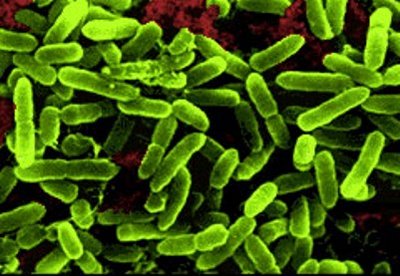 The term “probiotics” is bandied about in reefkeeping a lot lately as the carbon-dosing fad (and technology) has been increased by the advent of Biopellets and other solid carbon sources. These are meant to take the place of the old vodka dosing method; adding the benefit of easier administration, even more bacterial growth, and consequently more nutrient control. And here’s where my microbiologist-hackles get raised: everyone calls the bacteria growing as a result of carbon dosing “probiotics,” and all aquarium bacterial additives “probiotics” as well. In fact, these bacteria are NOT probiotic strains and don’t function in that way at all—so let’s get some definitions straight.
The term “probiotics” is bandied about in reefkeeping a lot lately as the carbon-dosing fad (and technology) has been increased by the advent of Biopellets and other solid carbon sources. These are meant to take the place of the old vodka dosing method; adding the benefit of easier administration, even more bacterial growth, and consequently more nutrient control. And here’s where my microbiologist-hackles get raised: everyone calls the bacteria growing as a result of carbon dosing “probiotics,” and all aquarium bacterial additives “probiotics” as well. In fact, these bacteria are NOT probiotic strains and don’t function in that way at all—so let’s get some definitions straight.
A probiotic is live bacteria administered to a host organism to benefit that host. The most common example everyone knows is yogurt. Our intestines are full of bacteria which serve many purposes—taking up real estate that could otherwise be occupied by pathogens, making vitamins, digesting nutrients…there are more bacterial cells making up you than there are human cells! We can replenish that microbiome (another handy term referring to your symbiotic microorganisms) by eating things which contain these organisms, like yogurt. Probiotic supplements containing Acidophilus species or Lactobacillus species work in the same way. We eat the live bugs, they take up residence, and everyone is happy. This is true in humans, fish, and even insects.
So, why do we call all our carbon-fed bacterial additives probiotics? Sure, they might make the tank healthier, but the tank isn’t an organism, and the bacteria don’t live in or on organisms. The denitrifying bacteria generally don’t live in oxygenated areas—they live in biofilms, either on live rocks or on our nifty new biopellets. Having a fancy “Pro” name isn’t what makes them special (apologies to Steve Pro; he is special). They perform a critical function—just not a probiotic one.
Are there actual aquarium probiotics? Absolutely! Some of the same strains we use for our own intestinal health have been used in raising larval fishes with good success and research is underway to identify intestinal bacteria from fish that can be then dosed to larval fish in the same way. It is hypothesized that this will function in the same way they do for us—preventing pathogens from taking hold, aiding digestion and increasing immunity in other nonspecific ways. They will likely be useful for fish breeders and may be a good adjunct therapy post-antibiotic administration. So let’s carbon-dose our nitrogen cycle bacteria living in our tanks and administer probiotics to our fish (and maybe other organisms as well?), and all the marine microbiologists will be happy.










0 Comments